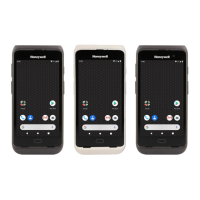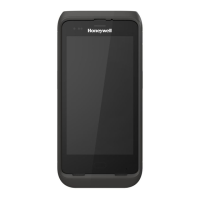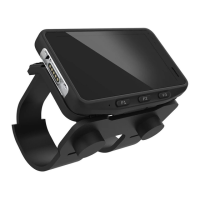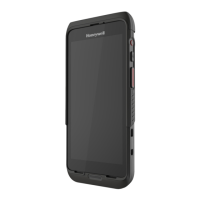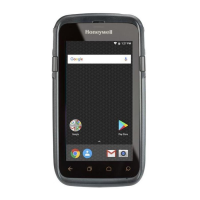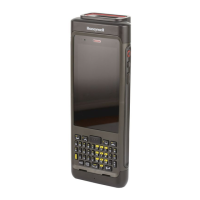96 CN80 Mobile Computer Series User Guide
4. A message will display notifying you that the Wi-Fi settings on the client device
will be reset as part of the staging process. Tap OK to confirm you wish to
proceed.
Staging will begin and a progress screen will display.
5. Place the device within 1 meter (3 feet) of the server device and it will begin
searching the server hotspot for a configuration.
The client devices will attempt to retrieve configuration from the server device and
a staging process screen will display. Once the client device receives and applies
the configuration successfully, the progress screen will be dismissed.
Note: To stop the staging process on an existing device, tap the Back button on the client
device.
Log Files
Wi-Fi Staging saves a key process and exemption log on the device in the following
directory: /sdcard/honeywell/Android/data/com.honeywell.wifistaging/Log/
This directory can be accessed through USB if Provisioning Mode is enabled.
About Voice Wedge
Voice Wedge is a voice-to-text conversation tool that can be triggered by a
specified start word or key press event. When Voice Wedge is activated, the mobile
device can capture a user’s speech and output it as text in a field in the selected
app. Voice Wedge can be configured to apply globally across all apps or only for an
associated application.
Note: Because Voice Wedge is powered by Google speech recognition services, it is only
available on Google Mobile Services (GMS) devices.
Define Trigger Mode
You can define either a spoken word or a key press as the trigger to launch Voice
Wedge.
1. Select Settings > Honeywell Settings > Voice Wedge.
2. Tap Trigger Mode.
3. Tap Start Word to define a voice command as the trigger or Key to use a key
press.
4. If you selected Start Word, tap Trigger start word and then use the keypad to
enter the word. The default trigger start word is “honeywell”.
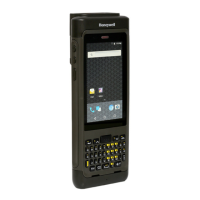
